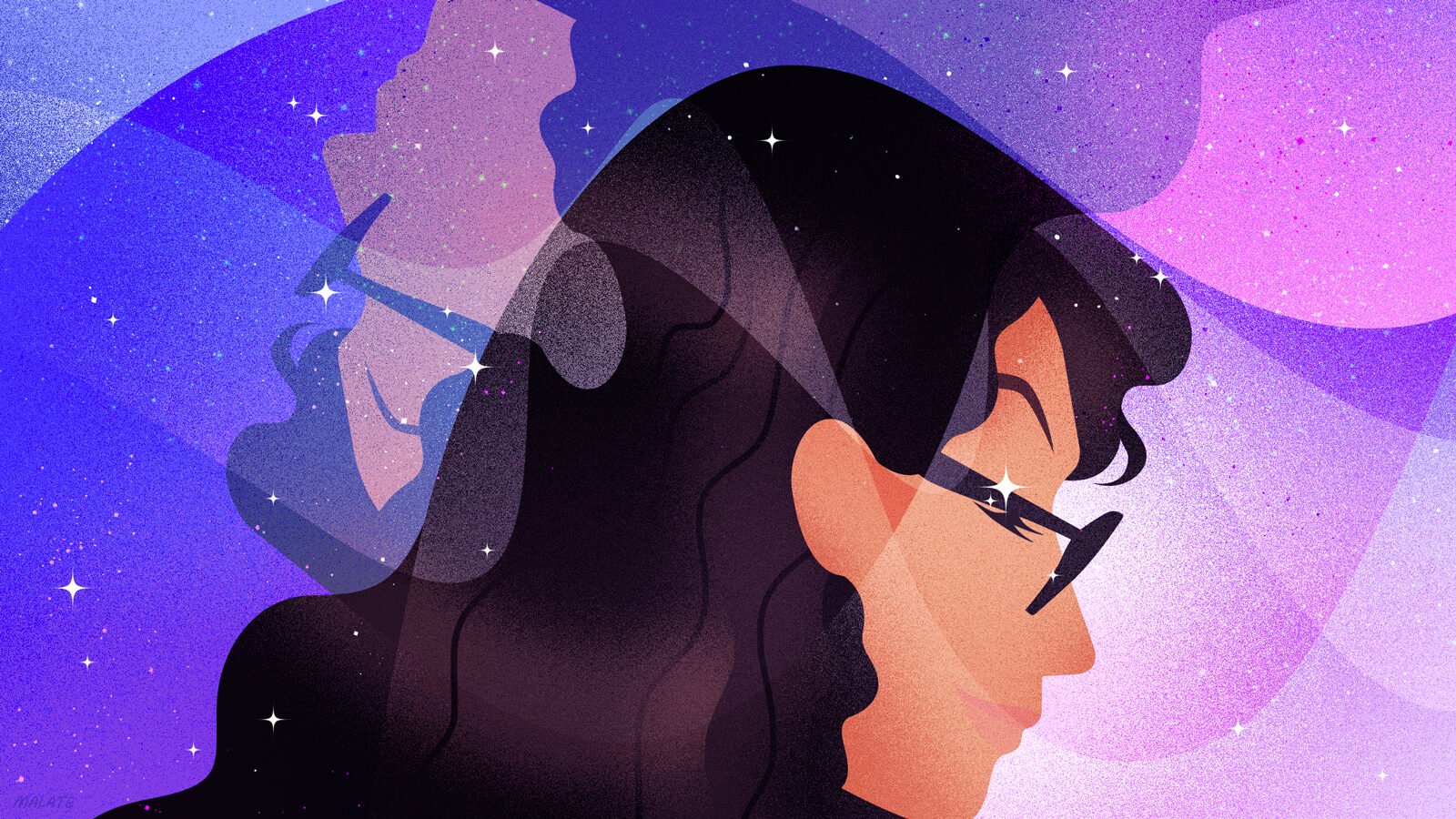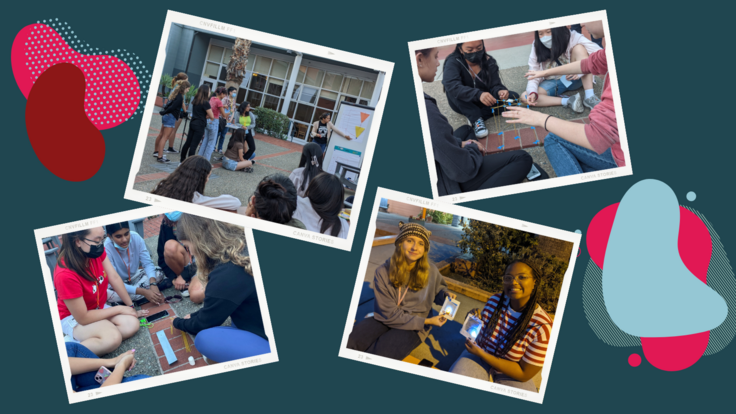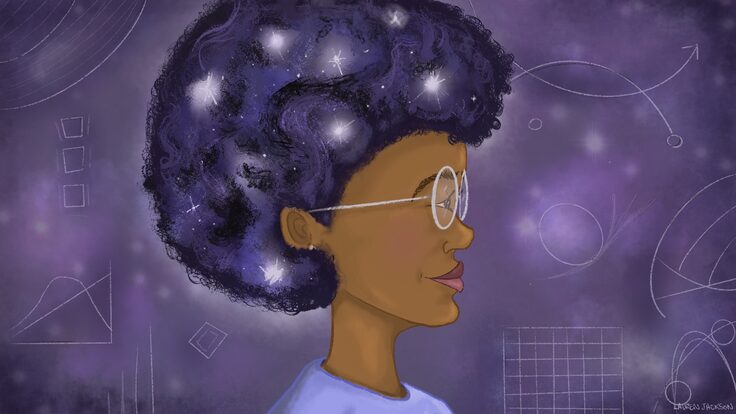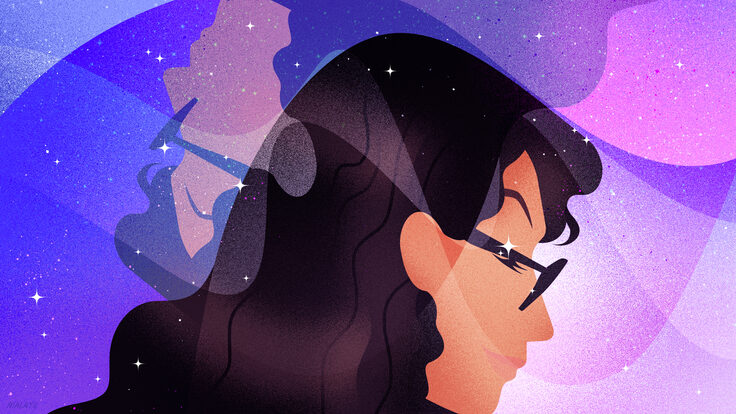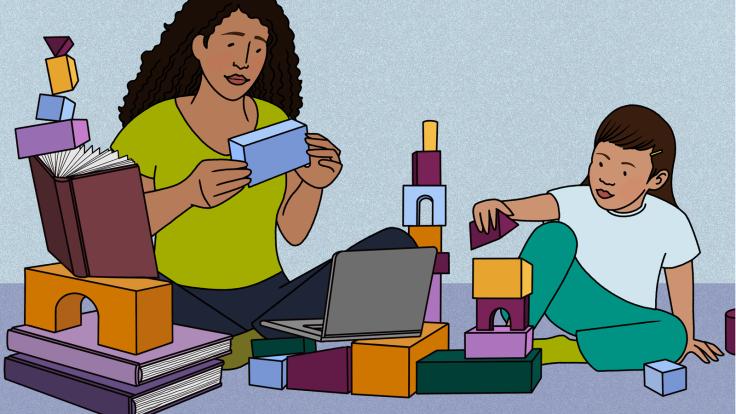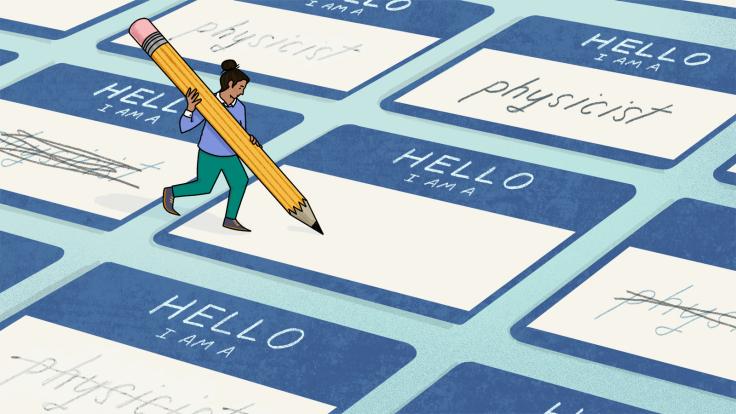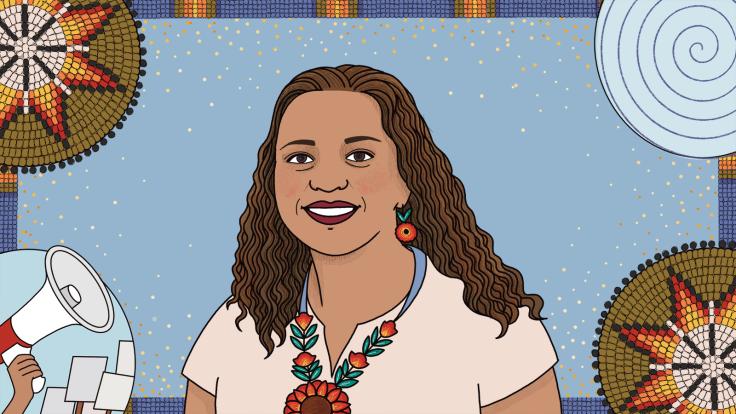Fernanda Psihas always knew she wanted to move to the United States to be a scientist.
As a child in Mexico City, she obsessed over her science books, specifically one on the evolution of the stars. “The fact that we could know what the elements that were inside the stars were was fascinating to me,” she says.
Science came naturally to her. She says she would absorb large collections of facts and then tell them to anyone who would listen. In middle school, Psihas’ classmates paid her to tutor them in chemistry, math and physics. But despite her obvious talent for STEM, Psihas underperformed in school; the classmates she tutored would get better grades than she did on exams.
Psihas was eventually diagnosed with Attention Deficit/Hyperactivity Disorder, ADHD, which affects neurological function. Like others in STEM, she has come to understand that the way her brain works can get in her way in her career while also helping to fuel her love and aptitude for it.
Now she and others hope to inspire change in the way people think about neurodiversity—natural variations in how humans’ brains function—in STEM.
Making the grade
As an undergraduate, Psihas pursued a degree in engineering physics. During that time, she participated in a summer research stay at the US Department of Energy’s Fermi National Accelerator Laboratory. She says it was only then—when she was the closest she had ever come to the future she wanted—that she realized her struggles with tests might mean that that future would never arrive.
“I always knew the number on the page was not accurate,” she says. “But now it also potentially meant that I couldn't do the thing that I was dreaming of doing.”
Despite never having studied harder in her life than she did for the physics GRE, she scored in the 13th percentile both times she took the exam. She applied to 10 graduate programs and was rejected by all of them.
After the application deadline for most schools had passed, a friend told Psihas that the graduate physics program at his alma mater, the University of Minnesota, Duluth, was still accepting students. Psihas says she applied to be polite; she did not have much hope and was beginning to doubt whether she was meant to be a scientist.
Three weeks before the semester began, she found out she had been accepted. The US embassy approved her student visa just in time.
At that point, Psihas realized she needed to figure out what was happening. She sought out a therapist, who asked her after a few sessions if she had ever considered that she could have ADHD.
Psihas says she was skeptical at first: “I went, ‘That's obviously not it,’” she says. “Like, I can pay attention to things. I just can't decide when.”
According to the Cleveland Clinic, that combination of hyperfocus—becoming absorbed in a task—and executive dysfunction—“a behavioral symptom that disrupts a person’s ability to manage their own thoughts, emotions and actions”—is common among people with ADHD.
It took some convincing, but once Psihas accepted the diagnosis, she found her prior frustrations finally made sense. By understanding herself better, Psihas also found she had empathy for others who had misunderstood her.
“There was a lot of self-acceptance that came with that,” she says. “Sometimes being neurodivergent, you have the temptation of hating the things about you that are a struggle. And I think that it was a shock to me. It wasn't a bad thing that I needed to get rid of. It was a full picture of myself that I turned out to really love.”
Neurodiversity in STEM
The term “neurodiversity” was first coined in 1998 in a graduate thesis by autistic Australian sociologist Judy Singer, in the context of her call for a civil and political rights movement for fellow “neurological outsiders.” Since then, the definition has been generalized to describe the normal neurological variation in human brains (which Singer has criticized).
Although neurodivergence is often seen as solely consisting of ADHD and autism, it is actually far broader and includes any brain-based disability. While it is impossible to accurately quantify how many people are neurodivergent, a 2020 paper estimates that neurodivergent individuals make up 15 to 20% of the world population.
Many neurodivergent people remain formally undiagnosed because they don’t know there is a name for what they’re experiencing, says Dave Caudel, the associate director of the Frist Center for Autism and Innovation at Vanderbilt University and an autistic self-advocate.
Part of this is due to stereotypes surrounding neurodiversity that limit people’s views of what neurodivergence looks like. Boys are still diagnosed with ADHD and autism at a higher rate than girls, and many of the best-known neurodivergent characters in pop culture—from Raymond in the 1988 film Rain Man to Sheldon in the more recent show The Big Bang Theory—are played by White men.
People also face barriers to receiving a diagnosis. Nicole Benker, a staff physicist at Pacific Northwest National Laboratory, considers themself a self-realized autistic. They say they have not sought a diagnosis because of the cost and the lack of nearby providers and resources for autistic adults.
Others choose not to seek a diagnosis to avoid discrimination or because of the social stigma attached to disability. But many neurodivergent people say they feel a duty to speak up to increase the visibility of neurodivergent people in society.
That’s the case for Yu-Dai Tsai, a postdoc at the University of California, Irvine, who says he began the gradual process of opening up about being neurodivergent a few years ago. Since then, he has spoken about being neurodivergent at conferences and workshops. Along with Psihas and others, Tsai gave presentations and led discussions about neurodiversity as a part of the recent Snowmass community planning process for all of US high-energy physics.
For their part, Benker is involved in the disability employee resource group at their lab, where they are working on a guide on disability in the workplace. Daisy Shearer, an autistic physics PhD student at the University of Surrey, started an online community called Neurodivergent in STEM, and she works on a variety of committees that focus on disability, neurodiversity and mental health.
Extraordinary pressure
Many neurodivergent people rely on routine and need regular time to decompress. The expectations to publish, travel to conferences, and frequently uproot one’s life while moving from institution to institution can push them out of STEM. Benker, for example, declined to pursue a graduate degree.
Many people realize they are neurodivergent only after completely burning out. “The pressure to publish [has] definitely impacted my mental health and exacerbated my depression and anxiety significantly,” Shearer says.
Emma Pearson, an autistic physics PhD student at the University of Alabama, says she faces similar struggles. “You get all the people that are bragging about how little sleep they get and how they have no free time and they spend all hours of the day working,” she says.
“And as somebody who can't do that, sometimes you start to think like, ‘Man, they put all of this energy into sending me over here to CERN, and maybe it would have been better if they had sent one of those people that could do work all hours of the day and night.’”
Tsai says he has met many talented neurodivergent junior researchers, but that they tend to leave the field due to the struggles they face.
One way to make things better for neurodivergent students and physicists would be to offer accommodations. In the UK, neurodivergent students can sign up to receive a disabled students’ allowance and to schedule weekly meetings with a mentor. Patrick Dunne, a Future Leader Fellow at Imperial College London, and Shearer, who both studied in England, say they found both to be immensely helpful.
But accommodations go beyond government-funded assistance, says Dunne, who has Asperger’s, dyspraxia and Tourette syndrome. “If you're organizing job interviews, if you're organizing conference talks, just ask people, ‘Is there anything I can do to make this a more comfortable experience for you?’” he says. “I think that would help a lot.”
Neurodivergent people’s support needs can vary day-to-day and are dependent on multiple factors. For example, Dunne says he twitches more when he is tired, at which point he needs to take time to twitch somewhere quietly.
Another factor that can affect neurodivergent people’s needs is medical treatment. For several months in the United States, medications like Adderall that help people manage symptoms of ADHD have been in short supply.
Psihas says she’s concerned about withdrawal symptoms if her medication runs out. But even more so, as she wrote in her blog, she’s concerned about how being off her medication will affect how others see her—especially those who don’t understand what she’s going through.
Even with accommodations, neurodivergent scientists can face a lack of understanding from peers, Benker says. “Sometimes [I] have to remind people that we’re all professionals and that that doesn't change if I'm playing with a fidget,” an object neurodivergent people can manipulate to help them with focus.
At other times, neurodivergent people need to fight to receive accommodations at all. According to a 2019 research brief from the ADA National Network, accommodations are often based on physician recommendations that are outdated and not individualized, and faculty often don’t know about or are even hostile to providing accommodations and following federal disability laws.
Caudel advocates for professors to seek more understanding of neurodivergent students and to embrace an educational framework called universal design for learning. The principles of universal design include making sure to provide students with multiple ways of absorbing and demonstrating knowledge. He says it removes the burden of neurodivergent students having to constantly advocate for themselves.
“One of the things that really keeps me up at night sometimes is: How many Einsteins have we lost?” Caudel says. “How many Einsteins are we losing right now because of this dogmatic idea that everybody has to fit a system that was designed for people in the neuromajority, but doesn't work well for everybody?”
Despite the barriers, a good fit
Caudel, who received his PhD in physics and who has mentored dozens of graduate physics students, says it’s important for students to learn about their needs and to advocate for them. It helps to connect with other neurodivergent people.
And they are there, Caudel says: Although it has its challenges, working in physics can be a good fit for people who are neurodivergent.
Caudel says he was first attracted to science due to its acceptance of all kinds of people. “When you get among scientists, being weird is almost normal,” he says, “and in that environment I really flourished. People are more likely to judge you based on your science rather than your people skills.”
Moreover, Shearer says, neurodivergent physicists benefit the field. “I think that many autistic people thrive in physics because the subject has many facets that our brains tend to like such as pattern-seeking and systemizing. If I get into a monotropic attention tunnel on the right topic … it can be a real asset.”
People who think differently may contribute out-of-the-box ideas, like Tsai’s recent work analyzing asteroid data in search of a hypothetical “fifth force.”
Particle physics includes some of the largest collaborations in STEM. Participating in these big, international groups can work well for neurodivergent physicists.
Working on an international project allows Psihas to work on her own schedule, and her time blindness—a difficulty recognizing the passing of time associated with ADHD—is less of a problem, since she has collaborators working at all times of the day.
Dunne has found that the extra effort he usually expends when communicating with neurotypical peers has prepared him well to work with colleagues from different cultures. “The fact that I've had to actively learn how my culture communicates helps me be a bit more understanding when we see other cultures communicating differently,” he says. “I don’t assume, ‘Oh I'm finding it difficult to communicate with these people; they must not have understood.’ I just assume, ‘Oh, right, the rules are different here and I need to actively learn them again.’”
Neurodivergent physicists can also make physics more welcoming in general, Psihas says.
“Every single time I have disclosed or seen someone [else] disclose a mental health struggle or a hidden disability,” she says, “I have also seen it inspire other people. Being open doesn't only make the environment better for you, it makes the environment better for everyone.”
Today, Psihas is back at Fermilab, studying neutrinos. She says she has thrived in the open and flexible environment that she found in particle physics. In addition, she recently qualified for permanent residency in the United States, categorized as an “alien of extraordinary ability.”
“To some people that might be a weird term,” she says. “To me, it's kind of cool. But also, it’s personally meaningful. Like, ‘Yes, you are different. But it's actually extraordinary.’”



